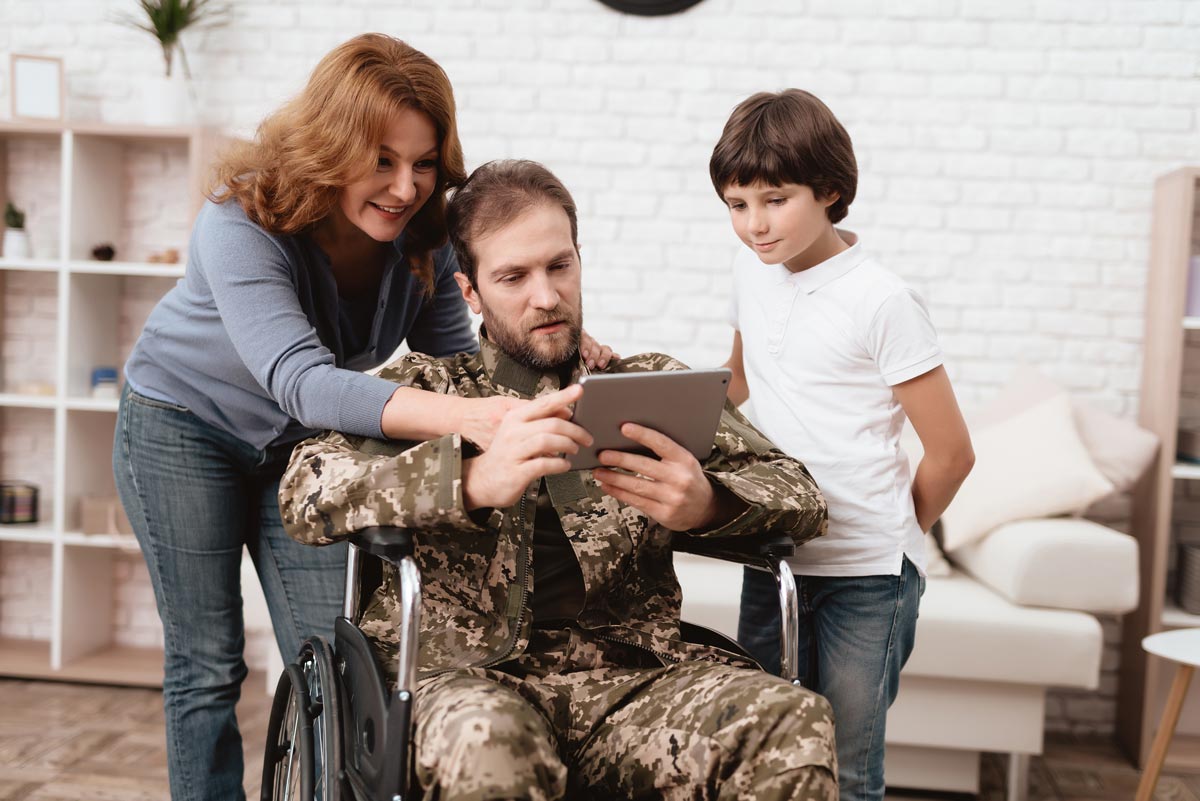When it comes to securing a free stairliftA motorized chair that travels along a rail attached to a staircase, enabling individuals with mobil..., we often find ourselves maneuvering a maze of eligibility criteria. Many programs hinge on factors like income limits, medical necessity, and even the suitability of your home for installation. It’s essential to understand these elements to determine if we qualify. Let’s explore the various pathways and resources available, ensuring we’re best positioned to access the support we need.
Key Takeaways
- Individuals with limited income and financial need may qualify for free stairlifts.
- Medical necessity, documented by healthcare professionals, is crucial for eligibility.
- Veterans with service-connected disabilities may receive stairlifts through grants.
- Homeowners meeting specific regional residency requirements might qualify for assistance.
- Nonprofits and government programs may offer free stairlifts based on eligibility criteria.
Understanding the Basics of Stairlift Programs

Maneuvering the world of stairlift programs can initially seem overwhelming, but understanding the basics is essential for those of us seeking assistance.
Stairlifts offer a vital solution for individuals with mobility challenges, enabling safe and independent access to different levels of a home. Programs exist to help alleviate the financial burden, often provided by government agencies, local charities, or non-profit organizations.
We should first identify the specific needs of our household and the type of stairlift that best suits those needs—whether straight, curved, or outdoor. Knowing these details can streamline our search for the right program.
Also, most programs have eligibility criteria—such as age, medical necessity, and home ownership status—that we must meet to qualify for assistance. Understanding these elements helps us navigate the process confidently.
Income Requirements for Stairlift Assistance
When exploring stairlift assistance options, understanding income requirements is essential for determining eligibility. We recognize that maneuvering through these criteria can be overwhelming, but it’s important to remember that help is available.
Income thresholds vary by program, but generally, they’re designed to assist those who need it most. Let’s break down some key considerations to keep in mind:
- Limited Income: Many programs focus on assisting individuals and families with restricted financial resources.
- Household Size: The number of people in your home can affect the qualifying income level.
- Regional Differences: Income limits can change depending on where we reside, reflecting local cost of living.
- Documentation: Prepare to provide proof of income, such as pay stubs or tax returns, to verify eligibility.
Understanding these factors brings us closer to accessing the support we need.
Medical Necessity Criteria for Eligibility
Now that we've covered the income criteria, let's focus on the medical necessity aspect, which plays a vital role in determining eligibility for a free stairlift.
To qualify, we must demonstrate that a stairlift is essential for daily living activities. This typically involves providing documentation from a healthcare professional confirming mobility challenges that hinder safe use of stairs without assistance. Conditions like arthritisInflammation of the joints, leading to pain, stiffness, and limited movement., severe joint pain, balance disorders, or recovery from surgery often qualify.
It's important to verify that the medical documentation clearly outlines how a stairlift would greatly enhance safety and independence at home.
Engaging with healthcare providers early in the process helps us gather the necessary evidence. By understanding these medical criteria, we can better navigate the application process for a stairlift.
Government Programs and Grants for Stairlifts
Let's explore how government programs and grants can help us access a free stairlift.
MedicaidA U.S. government program that provides health coverage to eligible low-income individuals, includin... may cover stairlift costs for those who qualify, while veterans can benefit from specific assistance programs.
Additionally, many states offer grant opportunities that could greatly reduce the financial burden.
Medicaid and Stairlift Coverage
Maneuvering the complexities of Medicaid can be challenging, but understanding its potential coverage for stairlifts is essential for those in need. Medicaid doesn’t offer a one-size-fits-all solution, as it varies considerably by state. However, it may cover a portion of stairlift costs through Home and Community-Based ServicesPrograms that provide support to individuals with disabilities in their own communities, rather than... (HCBS) waivers or other programs.
Let’s explore what this could mean for us:
- Relief from financial burden: A stairlift can be costly, and any assistance is invaluable.
- Increased independence: Being able to move freely at home can enhance our quality of life.
- Safety and security: Reducing the risk of falls provides peace of mind for us and our loved ones.
- Complex eligibility criteria: Steering through these can be intimidating but is crucial for accessing benefits.
Understanding these aspects can help us better navigate Medicaid's offerings.
Veterans’ Assistance for Stairlifts
While exploring available support options, veterans and their families should be aware that there are specific government programs and grants designed to assist in acquiring stairlifts.
The Department of Veterans Affairs (VA)A U.S. government agency that provides services and benefits to military veterans, including those w... offers several benefits that could help offset the cost of home modifications, including stairlifts. One key program is the Specially Adapted Housing (SAH) grant, which aids veterans with service-connected disabilities. This grant can be used for modifications like installing stairlifts to improve accessibilityThe design of products, devices, services, or environments to be usable by people with disabilities.....
Additionally, the Home Improvements and Structural Alterations (HISA) grant provides financial assistance for home modifications deemed medically necessary.
To access these resources, we should reach out to the VA for eligibility requirements and application processes. Let’s guarantee veterans receive the support they need to live comfortably.
State Grant Opportunities
Though federal programs provide substantial support, state grant opportunities can also play an essential role in securing stairlifts for those in need. Each state's approach can vary, but many offer programs tailored to assist residents with disabilities or limited mobility.
By tapping into these resources, we can help guarantee that everyone has access to the necessary equipment to maintain independence at home.
Let's explore how these grants can make a difference:
- EmpowermentThe process of gaining control, authority, and power over one’s life, often used in the context of...: Grants can provide the means to regain independence.
- Relief: Financial assistance alleviates the burden of high costs.
- Community Support: State programs foster a sense of belonging and care.
- Hope: Knowing help is available can inspire confidence and optimism.
Understanding available options can open doors to a more accessible life for many.
Nonprofit Organizations Offering Stairlift Support
Let's explore how nonprofit organizations can assist those in need of a stairlift.
We'll cover the eligibility criteria these organizations use, walk through the application process, and highlight the funding options available.
Eligibility Criteria Overview
Maneuvering through the world of nonprofit organizations that offer stairlift support can feel intimidating, but understanding their eligibility criteria is vital.
Let's break it down together, so we understand who qualifies for this life-changing assistance. Nonprofits often provide stairlifts to those who need them most, considering factors that reflect genuine need and vulnerabilityThe increased risk of harm or exploitation faced by individuals with disabilities, often due to soci....
Here are some common criteria:
- Financial Need: Many organizations prioritize individuals with limited income, ensuring help reaches those who truly can’t afford it.
- Medical Necessity: Proof of a medical condition requiring a stairlift can be essential.
- Residency Requirements: Some nonprofits serve specific regions or communities.
- Home Suitability: Your home may need to meet certain structural standards for a stairlift installation.
Understanding these can guide our journey to support.
Application Process Details
When applying for stairlift support from nonprofit organizations, understanding the application process is vital to guarantee a smooth experience.
We should first gather necessary documents, such as proof of income, medical need, and residency. These documents help verify our eligibility and expedite the process.
Next, we’ll locate organizations that align with our needs and check their specific requirements, as each nonprofit may have different criteria.
Completing the application accurately is essential—double-check for any errors or missing information.
Some organizations might require an interview or home assessment, so let’s be prepared for those steps.
By actively communicating with the nonprofit, we can make certain our application progresses smoothly.
Stay organized and proactive, and we’ll increase our chances of receiving the stairlift support we need.
Available Funding Options
While traversing the landscape of available funding options, it's important to identify nonprofit organizations offering stairlift support.
These organizations can be a lifeline, providing assistance and hope when we need it most. By reaching out, we can find help that makes our homes accessible and our lives safer.
Here are some ways nonprofits offer support:
- Financial Aid: They may offer partial or full funding for stairlifts, easing financial burdens.
- Equipment Donations: Some provide refurbished stairlifts, ensuring more people can benefit from them.
- Resource Guidance: They connect us with additional local and national resources for accessibility.
- Community Support: Many foster a sense of community, offering emotional support alongside practical aid.
Let's explore these options to find the pathway that best suits our needs.
How to Apply for a Free Stairlift

To apply for a free stairlift, let's begin by gathering all necessary information to streamline the process. First, we need to confirm eligibility by checking income levels and medical requirements set by local programs or charities.
Next, we should compile essential documents like proof of income, medical records, and identification.
After organizing our documents, let's research available programs that offer free stairlifts. We can contact local agencies, non-profits, or government departments to see if they've any ongoing initiatives.
It's important to fill out applications accurately and submit them before deadlines.
Finally, let's follow up with each program to verify our application is complete and progressing. This proactive approach helps us stay informed about any additional steps or documents needed.
Conclusion
In summary, we've explored how accessing a free stairlift can transform lives by restoring mobility and independence. Let's remember that understanding the eligibility criteria, from income requirements to medical necessity, is essential. We should leverage government programs and nonprofit organizations to aid us in this journey. By gathering the necessary documentation and reaching out to available resources, we're taking proactive steps towards securing the assistance we need for a safer and more accessible home environment.






